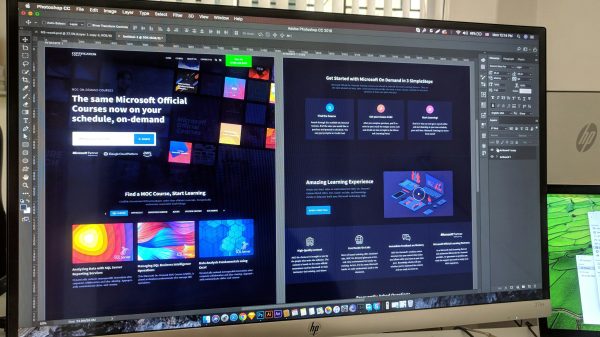In the early stages of their development, social media platforms often operate for years without generating any direct revenue from advertisements. This raises a critical but often overlooked question: how do these platforms survive financially before introducing ads as a primary revenue source? The answer requires an examination of business strategy, technological development, investor funding, and user acquisition techniques in the fast-paced digital economy.
Understanding the Lifecycle of Social Media Startups
Before delving into financials, it’s important to understand the typical lifecycle of a social media startup. These platforms do not begin with robust monetization plans or fully-developed infrastructures. Instead, they follow a progression marked by three major phases:
- Launch and User Acquisition: Focused on building a reliable product and gaining traction in the market.
- Growth and Engagement: Emphasis shifts to increasing daily active users (DAUs) and time spent on the platform.
- Monetization: Once a critical mass is reached, the platform introduces advertising or other monetization models.
It’s during the first two phases—before paid advertisements become a staple revenue source—that social media apps must rely on alternative survival mechanisms.
Initial Funding: The Lifeblood of Early Operations
The most significant source of income in the absence of ads is investor funding. Most social media startups go through several rounds of financing, expanded as follows:
- Seed Funding: Typically raised from angel investors, friends, or family. This funding supports product development, servers, and minimal staff.
- Series A and Beyond: As the platform gains users and data on engagement, venture capital firms step in with larger investments.
Such funding is bolstered by strong venture capital interest, especially if the product showcases high user growth and engagement rates. The narrative shifts from immediate profit to long-term value creation through user acquisition—essentially turning users into a form of capital.

Notably, many early investors understand that immediate revenue may take a backseat to building a loyal user base. Platforms like Facebook, Twitter, and Instagram raised billions of dollars across their pre-revenue phases, banking on the promise of future dominance in the digital space.
Data as Value
In the tech industry—particularly with social media—user data is currency. Platforms accumulate massive volumes of data on user behavior, preferences, and interaction patterns. Although these apps may not sell this data outright in their early phases, the value of understanding and predicting user habits is immense, enabling the following advantages:
- Platform Optimization: Developers use gathered behavioral data to create a more addictive, efficient interface.
- Valuation Justification: Data-rich platforms often command higher valuations even without revenue because investors view this data as a future monetization asset.
- Future Monetization Readiness: Having detailed insights allows for precise targeting when advertising is eventually introduced.
Even without selling ads, this data lays down the road for a robust business model.
Freemium Models and Premium Features
Some social platforms experiment with a freemium approach in their early stages. While the basic product remains free for everyone, certain features are locked behind a paywall. These may include:
- Advanced analytics (used mostly by businesses or influencers).
- Subscription-based visibility boosts or content promotion.
- Customization tools, such as premium themes or filters.
These premium tiers allow early users to directly contribute to the financial health of the platform. Although revenue from such offerings is often modest compared to potential ad revenue, it helps maintain basic operational costs.
Strategic Partnerships and Integrations
Another way that social media platforms can survive without advertising is through strategic alliances and integration deals. These often include agreements with:
- Mobile phone manufacturers: Pre-installing the app on new devices in exchange for a fee or user growth support.
- Cloud services: Discounts or credits offered as part of startup packages from AWS, Google Cloud, or Microsoft Azure.
- Other platforms: Integration with larger tech ecosystems can lead to cross-promotion, helping to scale rapidly.
These partnerships form a financial cushion and reduce the platform’s capital outlay on infrastructure, allowing them to stretch limited resources.
Open Source Contributions and Community Building
While not a direct revenue stream, building a strong user community of developers, influencers, and everyday users ensures virality and long-term sustainability. Some platforms leverage open-source contributions, allowing early adopters to refine code, add features, and reduce development time or costs for the core team.
Additionally, influencers and content creators begin to act as indirect marketers. Their engagement helps platforms attract new users, all without massive marketing budgets. This community-driven growth becomes a critical survival asset.

Branding and Media Buzz
Public relations is another underrated tool for survival. Many startups use stories—such as their unique value proposition, founder’s background, or viral trends on their platform—as tools to gain media coverage. This branding effort accomplishes key goals:
- Attracts investor attention by projecting credibility and market demand.
- Draws users organically through trusted media mentions.
- Positions the startup as a thought leader or disrupter in a specific niche.
A compelling brand narrative can help a platform stay afloat even if its monetization model is still unrealized. Visibility often substitutes for revenue in the early stages, converting market perception into business value.
Case Studies of Pre-Ad Survival
Several platforms have set examples by surviving for years before introducing advertising:
- Facebook: Operated for multiple years funded by venture capital before launching its first ads in 2007. During that time, a massive user base was steadily built.
- Snapchat: Raised significant funding and only began monetizing through ads about three years after launch.
- Clubhouse: Attracted a wave of interest during the pandemic and remained ad-free during its explosive growth phase, focusing on exclusivity and user traction.
Each of these examples underlines the idea that monetization can be deferred if the platform shows long-term growth potential and has access to sufficient funding.
Conclusion: Survival Through Strategic Patience
Surviving without advertisements is not just plausible for social media startups—it’s a structured and often strategic decision. These platforms typically rely on a confluence of investor capital, data acquisition, user engagement, and brand visibility to navigate their initial stages.
Advertisers enter the equation only when the user base becomes large and engaged enough to ensure substantial returns. Until then, survival is a careful balance of innovation, growth metrics, and strategic storytelling. For those platforms that manage to hold out long enough, the eventual payoff from advertising—and beyond—is often substantial.


































